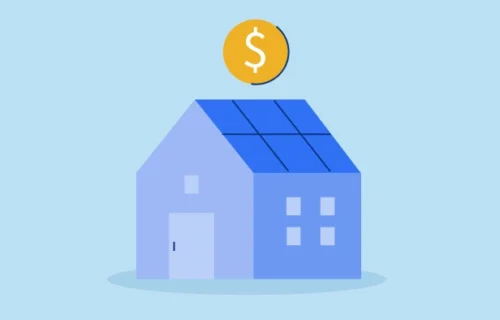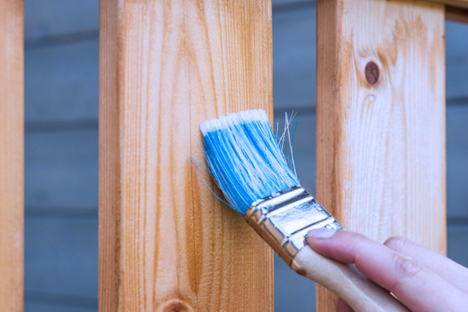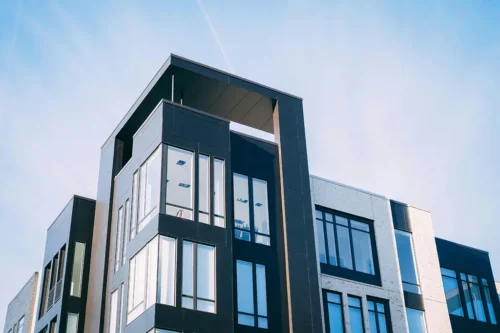
Connect with a Lima One expert today!
If you’d like to know more about this topic or see how it applies to your project, let’s talk.
5 Tips for a Successful Flip
When It's Time for Your Next Flip, Keep These Tips in Mind
Originally printed in whoisonthemove.com
The fix-and-flip market is red hot right now, and real estate investors are reaping the benefits.
House flipping is when a real estate investor buys a property and holds onto it for a short time before selling it (the flip part) in the hopes of making a profit. Instead of buying a home to live in, the investor is buying a home as a real estate investment.
Sometimes, flipping a house includes a lot of repairs or renovations. Other times it’s owning the property until it can be sold for more than the purchase price plus the after-repair value (ARV).
The goal is to buy low and sell high, invest sweat equity to cut costs, and earn a profit in a relatively short amount of time — usually within months or a year.
Houses in areas with rising home values are ripe for flipping, especially when investors can buy run-down homes at a steep discount and then renovate them to today’s tastes. So, a savvy fix-and-flip investor must be prepared in order to capitalize on the real estate opportunities that exist in the market.
Lima One Capital offers a wide variety of fix-and-flip property loans for real estate investors looking for bridge loans, a cash-out refinance, or a loan for heavy rehab or new construction. Over the past 10 years, we have worked with thousands of fix-and-flip investors of varying experience levels, and we have developed loan programs and in-house construction management to give these investors the best chance to profit.
Based on our experience and our investors’ expertise, here are five of the most important basics that fix-and-flip investors should remember, whether it’s their first flip or their 500th.
Understand fix-and-flip financing
Whether it’s a light flip that requires mainly aesthetic changes or a heavy rehab with major upgrades, a fix-and-flip loan gives you access to the capital you need.
Most fix-and-flip loans differ from traditional mortgages in two ways. First, they are short-term to cover the amount of time it takes to completely rehab and sell the property. Lima One’s typical fix-and-flip loan is 13 months. Second, Lima One and other lenders offer interest-only loans, unlike traditional mortgages where borrowers pay both principal and interest.
Of course, with flipping a house, you need to run the numbers based on loan terms like purchase price, origination fee, and interest rate. Unlike with a primary residence, you need to make sure these costs plus rehab leave money for a healthy profit. It’s also important to know how construction draws work – how long they take, are you paying interest on undrawn construction funds, and more – so you can manage cash flow throughout the life of the loan. The best private lenders, like Lima One, will ensure the numbers and the process work before extending you a loan.
Location, Location, Location
You may love the fix-and-flip you just purchased, but will your potential buyer?
Home shoppers aren’t just looking for a home that meets their needs. Families are looking for a neighborhood with access to great schools. Retirees are looking for more serenity. A young single may want night life. Before you invest in a property, know what the surrounding area looks and feels like. Get a feel for what it will look like in 10 years.
Know what kind of people are moving into the neighborhood, and make sure your project fits their desires and budgets. This takes more than a desktop appraisal view of an area—especially in times when home prices are volatile.
Location doesn’t just determine where you buy—it also impacts what rehab you do. You’ll have trouble selling a home with luxury-level bathrooms and kitchens in a neighborhood where most houses sell for market value. Keep your rehab expectations (and budget) in line so that the final sales price befits the neighborhood. This will give your investment the best chance of success
Create a realistic renovation timeline
No matter what you’ve seen on HGTV, fix-and-flip projects take time. You need to account for the time it might take so you can budget and schedule accordingly. Too often, first-time flippers have very unrealistic timelines on how long it will take to get a house ready to flip.
Even seasoned flippers can’t chart out a timeline that works every time because of factors from weather to labor shortages. The COVID-19 pandemic incited additional unusual delays due to government permitting office closures and construction supply shortages. And although the housing market is moving very quickly right now, you don’t have a guarantee that your property won’t sit on the market for a few months.
While it’s fine to create an ideal renovation timeline, your budgeting and planning process needs to account for contingencies and delays. If your entire profit opportunity is based on a tight timeline, then you’re risking a complete failure of a flip. Don’t make that mistake.
Make a budget and keep it
Before you even purchase a property, know how the numbers work. Does the purchase price leave enough room for the right rehab to make the property a hot seller? Can you do an aesthetic flip focused on new countertops and fixtures, or do you need to do more like taking down walls or adding square footage? Make sure there’s enough difference between your costs (purchase, rehab, and others) and the ARV of the home to make the flip worth your time.
Once you get started, ensure that you run it like a business. Track timelines and expenditures so that you can keep the project on track. Schedule contractors and sub-contractors early so you don’t have long delays where the house sits empty, because these kinds of time gaps cost you money. It’s not enough to make the numbers work at the outset—you need to manage the project to your budget to ensure your ultimate profit.
Pick partners you can trust.
The shows on TV make celebrities out of flippers, but the truth is that any fix-and-flip investor needs a strong network to succeed. You’ll need to find general contractors, real estate agents, insurance providers, lenders, and others that can use their expertise to help you complete your flips quickly and profitably.
At Lima One Capital, we are committed to being that kind of partner for real estate investors. That’s why we work to provide the best fix-and-flip financing solutions for real estate investors across the country. We know funding quality fix-and-flip projects is a keyway to accomplish our mission of building, improving, and stabilizing neighborhoods nationwide.
When you’re ready to find the right lender to partner on your next fix-and-flip investment, you’ll find that Lima One’s team of experienced professionals guide you to the right loan for your strategy so you can capitalize on your next investment.
Our online application process is simple and easy to complete. You’ll be guided through the process step-by-step, and document tracking is a breeze. So, take the first step toward your next FixNFlip by contacting us or applying today.
Subscribe for More Insights
Get the latest industry news & Lima One updates.









